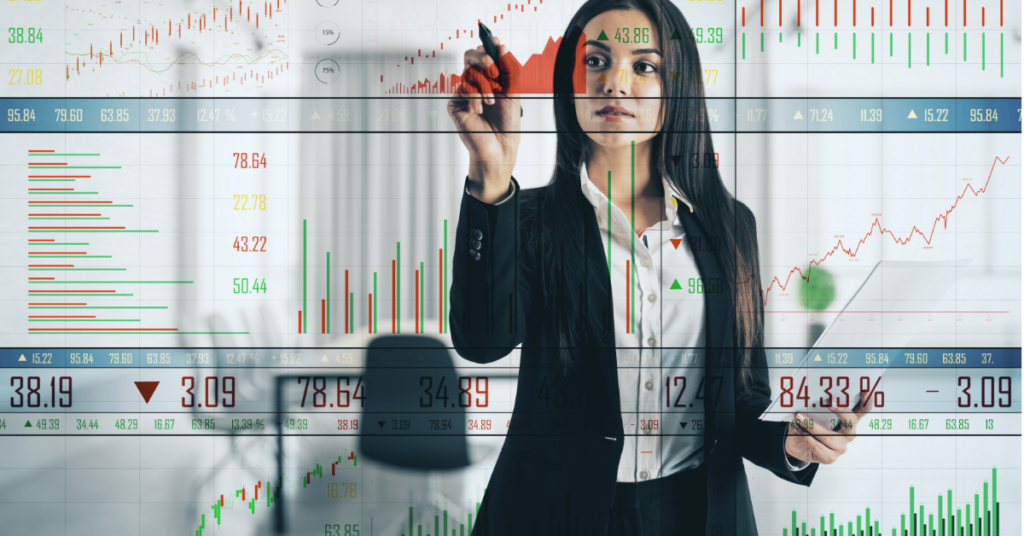
In the dynamic world of forex trading, having a well-organised and efficient trading screen can significantly enhance your ability to make informed decisions and navigate the markets with confidence.
Whether you are a novice trader just starting out or someone looking to optimise their trading setup, understanding how to structure your trading screens is essential.
In this comprehensive guide, we’ll walk you through the process of setting up your trading screens to maximise clarity, focus, and efficiency.
Why is it important?
Before we delve into the specifics of setting up your trading screens, it’s crucial to understand why a well-organised layout is so important.
Your trading screen is essentially your cockpit, where you monitor market movements, analyse data, and execute trades. A cluttered or disorganised screen can lead to confusion, missed opportunities, and potentially costly mistakes.
By streamlining your trading screen and prioritising key information, you can improve your ability to spot trends, identify entry and exit points, and ultimately, increase your profitability.
A clean and organised screen fosters clarity of thought and allows you to maintain focus on the factors that matter most in your trading journey.

Planning your screen layout
Number of screens
One of the first decisions you’ll need to make when setting up your trading screens is whether to use a single monitor or multiple monitors.
While a single monitor setup may be sufficient for some traders, others may benefit from the additional screen real estate provided by dual monitors.
Single monitor
Dual monitors
Ultimately, the decision between single and dual monitors will depend on your personal preferences, trading style, and budget constraints.
Prioritise information
Regardless of whether you opt for a single or dual monitor setup, it’s essential to prioritise the information displayed on your screens based on your trading style.
For example, scalpers who thrive on short-term price movements may prioritise real-time data and quick order execution, while swing traders may focus more on longer-term trends and market analysis.
Consider dividing your screen real estate into different sections dedicated to charts, market data, news feeds, and order management to ensure easy access to the information you need most.

Essential elements for your forex screens
Now let’s take a closer look at the key components that should be included in your trading screens.
Charts
Charts are the visual backbone of your trading analysis, providing valuable insights into price movements and market trends. When setting up your charts, consider using a reputable charting platform such as MetaTrader or TradingView.
Setting up charts:
Market watch
The market watch window allows you to track the prices of various currency pairs in real-time. It’s essential to include frequently monitored currency pairs along with their bid/ask prices and percentage change.
Customising market watch:
News feed
Staying informed about economic news and events is crucial for forex traders. Integrate a reliable news feed into your trading platform to receive timely updates on market-moving events.
Selecting news sources:
Order management window
The order management window is where you place and manage your trades. Keep this window readily accessible but avoid cluttering your screen with unnecessary details. Focus on essential information such as order type, size, and execution price.
Optimising order management:

Additional considerations
Customisation
Don’t be afraid to customise your trading screens to suit your preferences and trading style. Experiment with different colours, layouts, and settings until you find what works best for you.
Customisation options:
Focus and clarity
Maintaining a clean and clutter-free screen is essential for staying focused and avoiding information overload. Remove any distractions and only display the information that is relevant to your trading decisions.
Tips for clarity:
Multiple strategies
If you employ multiple trading strategies, consider creating separate screen layouts for each strategy. This will allow you to switch between different approaches seamlessly and avoid confusion.
Managing multiple strategies:
In conclusion, setting up your trading screens is a fundamental aspect of forex trading that should not be overlooked. By organising your screens thoughtfully and prioritising key information, you can enhance your ability to make informed decisions and navigate the markets with confidence. Remember, there is no one-size-fits-all approach to setting up your trading screens. Take the time to experiment and customise your setup until you find what works best for you.